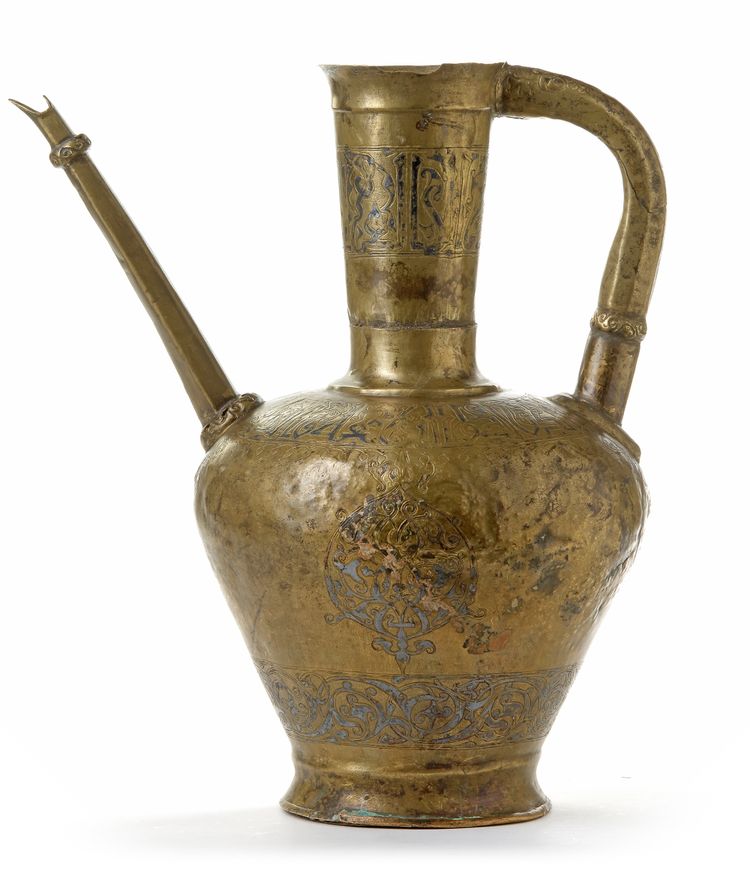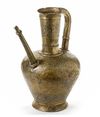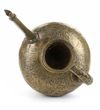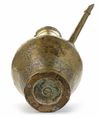A LARGE NIELLO-INLAID BRASS EWER, CENTRAL-ASIA, 12TH-13TH CENTURY
Cast and engraved brass inlaid with niello. An ewer (ibrik) with a swollen baluster form with a tapering cylindrical neck terminating at the shoulder with a raised lobed ridge and a narrow tapering pentagonal spout. Decorated in niello inlay with broad cartouches of bold cursive calligraphy, around the body two large roundels of interlacing arabesque foliage above a band of interlacing foliate motifs. The neck and the shoulder are both inlaid with a band of Arabic calligraphy in Kufic script. The inscription: perpetual glory, safe life, clear vision, approaching the best and best luck to its owner. 34 cm high.
An authentication certificate from a recognized international organization is available on request.
CATALOGUE NOTE This form of ewer is typical for Central-Asia (east Anatolia). Other similar examples are in the Cleveland Museum of Art (London 1976, no. 195), the Museum für Islamische Kunst, Berlin (Berlin 1971, no.378), The Metropolitan Museum (Atil 1985, fig.48), the Freer Gallery of Art, Washington (Atil 1985, no.16), the Nuhad Es-Said Collection (Allan 1982, no.6) and two in the Museum for Turkish and Islamic Art, Istanbul. Conveniently, several of these bear dates, from 1223 AD on the Cleveland ewer to 1232 AD on the Freer example, and so the present ewer can be dated, by comparison, to probably within the third and fourth decades of the 13th century. Some of the ewers also bear the signatures of makers which include those with the nisbah ‘al-mawsili’, indicating their origin from, or at least some connection with, the city of Mosul. The dating of the piece suggests that it would have been produced during the period of rule of the notably diplomatic Badr al-Din Lulu, whose efforts-maintained peace for the city despite the arrival of the invading Mongol armies. The steady rule of Badr Al-Din Lulu and apparently generous patronage fostered one of the greatest schools of Islamic metalwork, producing such works as the Wade Cup, in the Cleveland Museum. The influence of the school was to be immense, determining, in large part, the nature of Ayyubid and Mamluk metalwork.
PROVENANCE Private collection, Belgium





